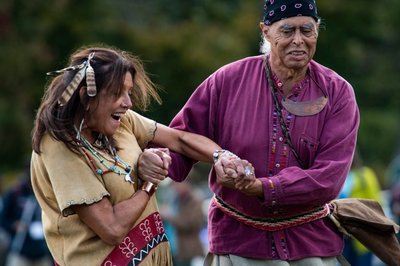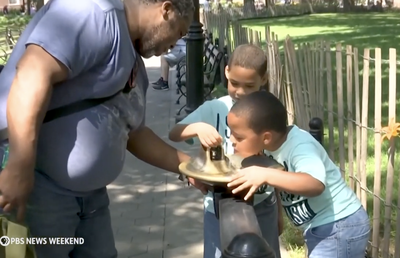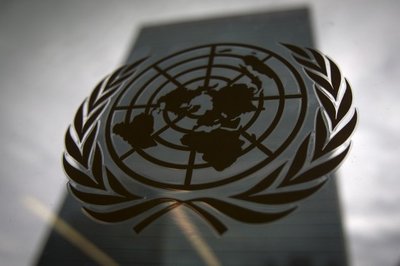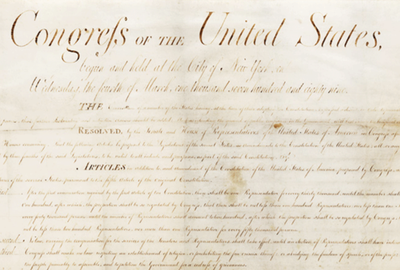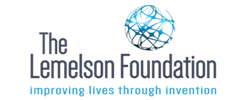NEEDS REVIEW: SOURCING - Needs both side of the political spectrum on opinion articles - CATO and AEI represent only one side
By Greg Timmons, teacher and Executive Director of The Constitution Project in Portland, Oregon
Subjects
Social Studies, International Studies, Geography
Estimated Time
3 class days
Objective
Students will:
- Understand that President Bush's foreign policy to promote democracy is a departure from the Cold War policy of containment, and examine the reasons this policy has been proposed at this time.
- Examine recent Middle East events showcasing citizens practicing democracy in elections and public demonstrations and analyze the extent of democracy in these areas.
- Explore where democracy does exist in the Middle East and evaluate the extent of political rights citizens of individual countries experience.
- Analyze diverse views of the prospects for democracy in the Middle East and draw conclusions as to its relationship with the president's foreign policy of spreading freedom around the world.
Overview
In this lesson students will examine the prospects for democracy in the Middle East. Beginning with an analysis of President Bush's inaugural speech and its call for promoting democracy throughout the world, students will examine key portions of the speech and assess the policy promoted. Then students will examine some recent events that have brought some foreign policy experts to believe an expansion of democracy in the Middle East is occurring. Students will also explore where democracy exists now in the Middle East by comparing the countries' political profile against the U.S. State Department's "Pillars of Democracy" criteria. Finally, students will examine three diverse views on the prospects for democracy in the Middle East, compare these views with the theme of President Bush's second inaugural address and make recommendations on what U.S. foreign policy should be.
Background
The Middle East has had contact with Europe and the West for centuries. While much of this contact revolved around trade, it wasn't always a harmonious relationship. The European Crusades of the 12th through 14th centuries saw Europeans and Muslims waging war on each other in epic battles over territory and conquest. After World War I, with the defeat of the Ottoman Empire, the Middle East fell into the hands of the European victors. National borders, originally based on ethnic and political boundaries were re-arranged to suit the Europeans economic and political needs for the 20th Century.
The discovery of oil deposits in Saudi Arabia, Iran, and Iraq led to a quasi-colonialism that saw much economic activity but not much political reform. The old ruling families of the Arabian Peninsula were given authority by the Europeans to "keep things in order." Sometimes this worked and other times new leaders emerged who were opposed to western nations' wishes.
The establishment of the Jewish state in Israel brought a democratic government to the region, and strong political and cultural resentment by many Muslims in the region.
The emergence of the Cold War created a paradoxical dance with Muslim governments being both friend and foe to U.S. and European policies adding another complex dimension to international relations in the region. During this time democratic government became established in only a few countries like Israel and later Turkey. Democracy found difficulty establishing itself in Lebanon and only took on vague characterizations in Egypt and Morocco. In fact, it was never an official political priority by any of the countries in the Middle East or the West until most recently. A sequence of events in the early months of 2005, beginning with elections in Iraq and Palestine and open and successful political protest in Lebanon against Syrian influence, led many to believe a new chapter was being written in the Middle East. President George Bush, in his 2nd inaugural address, introduced a new role for the United States in fostering global democracy, with its beginnings in the Middle East.
Extension Activities
- Have students research any of the events briefly described in PART II. They should find at least three sources from news media that describe the event and provide analysis. Students will then write a paper that summarizes the event and to what extent they feel democracy has occurred.
- Set up a debate between students or have them write op-ed pieces that express their views on the benefits and drawbacks of President Bush's promotion of freedom as stated in his second inaugural address.
- Have students work in small groups to brainstorm their views on democracy in the United States. What characterizes the U.S. as a democratic state? Then have them work in small teams or independently to compare and contrast this with what they have learned about democracy in the Middle East. Students should be sure to include differences in the history and culture of the two areas and refer to sources that discuss this topic at length. Have students construct their ideas in an essay that they can submit to the NewsHour Extra's Web site to extra [at] newshour.org for possible publication.
About the Author: Greg Timmons is a teacher, curriculum writer and Executive Director of The Constitution Project in Portland, Oregon. He has taught middle school and secondary Social Studies for over 30 years, written lessons, and directed institutes on U.S. Constitution related issues. He is a member of the Board of Directors of the Oregon Council for the Social Studies.
